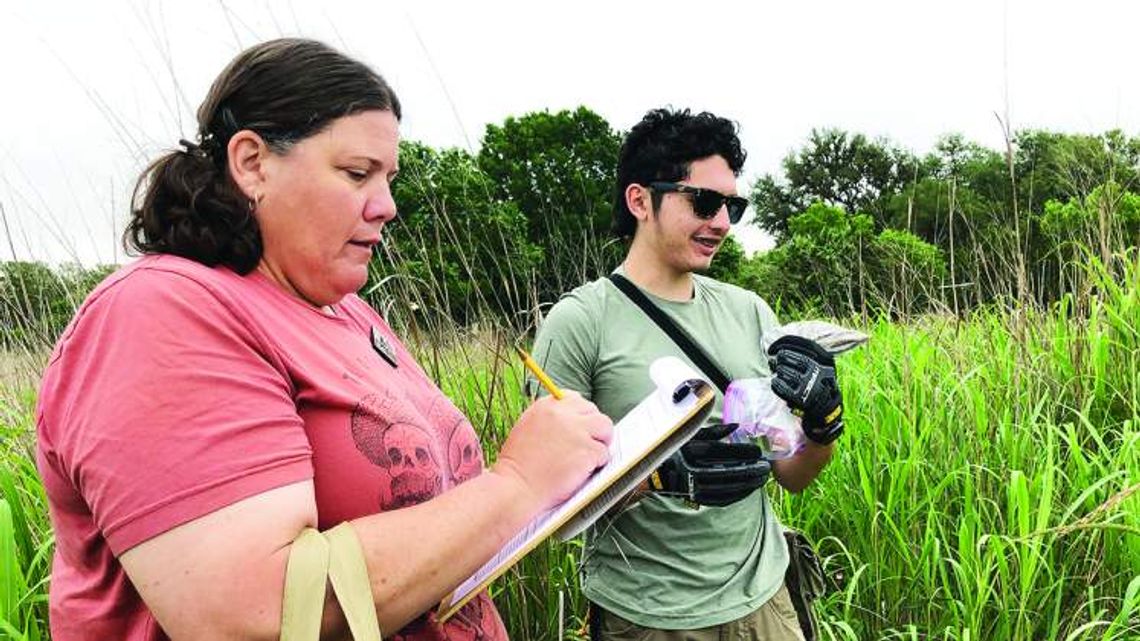On July 21, 2022, the International Union of Conservation of Nature announced the monarch butterfly (Danaus plexippus plexippus) had been added to the IUCN's red list of threatened species as an endangered species.
The loss of its habitat and the effects of a changing climate on this migratory insect are pressures that have led to dramatic decreases in its population over the last several decades. The monarch butterfly is considered a “flagship species,” a species designation selected to act as an ambassador, icon or symbol for a defined habitat, issue, campaign or environmental cause. This attention brings awareness to the need to protect the biodiversity and native landscape of conserved lands along the monarch’s migratory path. Conserved greenspace not only supports the monarch but thousands of other species and wildlife simultaneously.
The Cibolo Center for Conservation has a large monarch restoration field on the Herff Farm that demonstrates to other landowners how to restore your land and make it a prime habitat for birds, bugs, bees and, of course, butterflies.
The vast biodiversity of our natural land is a dream for a research scientist like me. My team of volunteer community scientists at the Cibolo help monitor, observe and collect data on everything from milkweed to nesting songbirds throughout the year. This data helps provide important indicators for scientists worldwide on how critical species can be affected by the impact on their habitats.
By working to protect the monarch butterfly’s habitat, all pollinators benefit from the lands covered by native or restored native habitats. Non-native plants can threaten species and populations through competition and disease.
So, what can we, as informed and concerned habitants of this planet, do to help? Plant and nurture native plants whenever possible. Be aware of what you buy from big box stores – is the plant a native? Is it responsibly grown? Will this plant I place in my landscape bring something more to my yard than just color? Is there a way to provide a habitat for native insects and bird species so I can promote a healthy environment?
The Cibolo’s team of community scientists are critically necessary for helping us maintain healthy native flora and fauna across our hundreds of acres at the Cibolo Nature Center and Herff Farm. For 20 years, the Cibolo has supported monarch research through the Monarch Larval Monitoring Program. A dedicated team of volunteers has monitored the patch at the entry drive to the Cibolo Nature Center since 2002 – making this site one of the longest continuously monitored natural milkweed areas in North America.
This is only achievable through the help of dedicated volunteers who work as community scientists during our weekly and monthly monitoring projects and the biannual Wildlife Field Research weeks. The Fall bioblitz is coming up on Oct. 3-8, and we need more volunteers to join.
The surveys performed during WFR help us gather data to quantify the state of the land and wildlife found on our two campuses. While our community scientists allow us to record the monarch’s migration through our area, they are simultaneously helping us preserve the land for the many other species that play roles in our unique ecosystems.
Sometimes, it’s easy to think of it this way: if nature were theatre, there would be not one or two main characters but a huge ensemble cast of characters that make the play successful. And in this way, highlighting the monarch’s plight brings to light the precarious position that many species face, most of which we will not know about until it is too late.
That’s why it is so important now to protect lands for all native species and to volunteer as a community scientist through a local organization like the Cibolo. Better yet, take matters into your own hands and plant some native plants to support the native wildlife with native habitat.
Visit www.cibolo.org to learn how you can protect, preserve and enjoy nature today.
Darla Reid is the Cibolo Center for Conservation’s full-time resident research scientist.







Comment
Comments